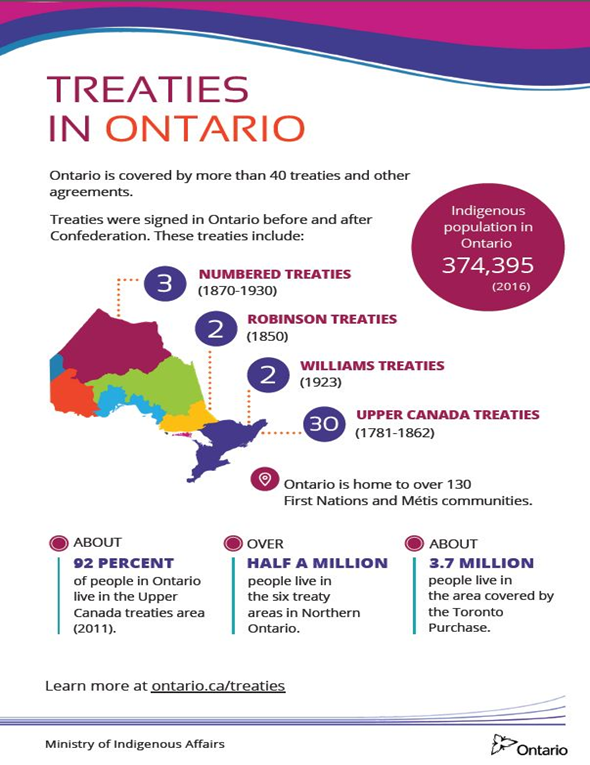Treaties Recognition Week
November 3-9, 2024

In 2016, Ontario passed the first legislation of its kind in Canada declaring the first week of November as Treaties Recognition Week.
This annual event honours the importance of treaties and helps students and residents of Ontario learn more about treaty rights and relationships. By learning more about our collective treaty rights and obligations, we can create greater understanding and nurture relationships between Indigenous and non-Indigenous peoples.
Treaties Recognition Week also represents one of many steps on Ontario’s journey of healing and reconciliation with Indigenous peoples. Launched in 2016 in response to the Truth and Reconciliation Commission’s Calls to Action to increase treaty awareness, it provides students and the public with an important opportunity to learn why treaties matter to all Ontarians.
Each year, Ontario hosts events to promote understanding around treaty rights, treaty relationships and their relevance today. Treaties Recognition Week will take place November 3 – 9, 2024.
For more information, teaching and learning resources please go to:
For the Scope and Sequence of Expectations Relating to Treaties and Land Claim please refer to:
What is a Treaty?
 A treaty is a Nation to Nation agreement that established the terms for how sovereign peoples would coexist peacefully while sharing the land.
A treaty is a Nation to Nation agreement that established the terms for how sovereign peoples would coexist peacefully while sharing the land.
Indigenous Peoples made treaties with each other long before the arrival of the Europeans. These agreements made sure that each nation understood the customs of the others, their territories and their laws. These treaties were recorded orally. It is with this understanding that Indigenous Peoples entered into treaty negotiations with settler peoples. Indigenous people, while negotiating treaties over the use of the land and its’ resources, came to the table with the understanding that land was for everyone to share, as were its’ resources. The European view on land was that it could be owned and given to someone else. Over the years, the governments of the time signed treaties with Indigenous Nations to acquire land that Indigenous Peoples traditionally occupied. Settlers would live on and develop this land. Indigenous Peoples believed that this was a sharing agreement and Europeans believed that the Indigenous Peoples were surrendering their land. In many of these treaties, gifts and money was given by the government in exchange for a promise of a peaceful relationship. To recognize a treaty, the Europeans had a written agreement signed by all parties. Many Indigenous leaders signed with an x or a symbol of their clan. Indigenous Peoples recognized agreements made between the two Nations by creating a Wampum Belt.
Many Canadians believe that treaties are a thing of the past. Not only are treaties still being made today in the form of land claims, treaties made in the past remain legally-binding agreements between nations that must be adhered to by all settlers residing in this country.

To Hear Indigenous voices on treaties, please refer to;
https://www.ontario.ca/page/videos-indigenous-voices-treaties
For a Map and information about the treaties in Ontario, please visit:
https://www.ontario.ca/page/map-ontario-treaties-and-reserves
For an excellent video series that you can share with your primary and junior students about treaties and wampum, please visit:

